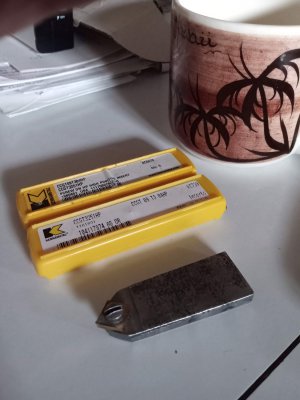I’m not good at grinding HSS either, so I mostly use screw style inserts for my tooling.Ok I get it.
So what makes an insert/tool bit give a good finish cut even with a low depth?
I tried grinding HSS bits and I could never get a good finish off of a HSS bit, no matter what I do, hone it, etc. it would always give a scratchy finish. Is it the chipbreaker or just how sharp the edge is?
The angle, chipbreaker and the shape of the edge determines the depth of cut range. This file is an excerpt from the Kennametal catalog and shows the different styles and performance data. You can see that the shallow depth of cuts have sharper edge styles, and the ones for roughing have more robust edges.


